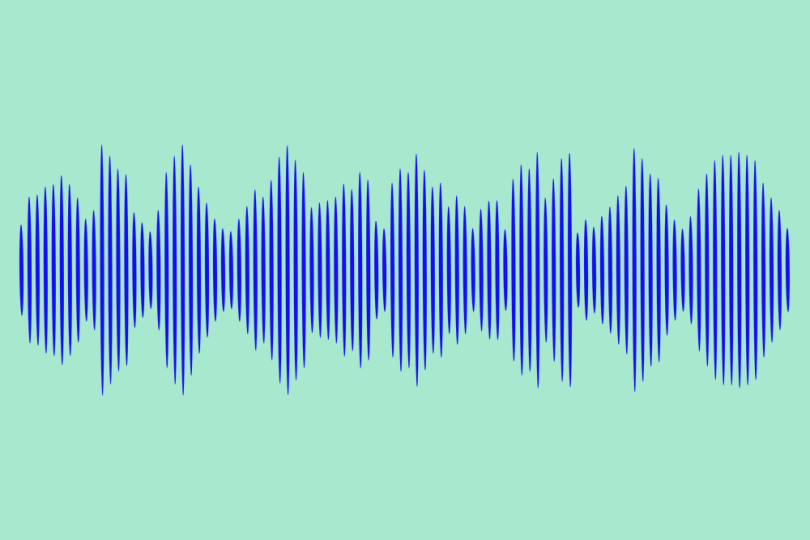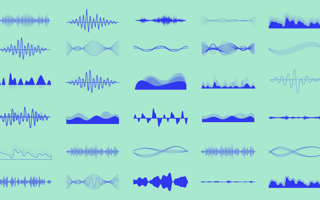In May, podcast host Joe Rogan went from rich to richer. “[W]eirdly richer,” he told the New York Times. He had struck a deal with Spotify over exclusive streaming rights to The Joe Rogan Experience, his popular and controversial podcast. Spotify reports it’s the most-searched-for podcast on its platform.
The multi-year licensing deal was worth more than $100 million, the Wall Street Journal reported.
Among podcasting insiders, it’s a controversial development.
“The more attention that podcasting gets from everyone ... the better it is,” Marty Michael, co-founder of podcast network Headgum, told Built In. In other words, when “household brands like Spotify” invest in the medium, ad dollars flow into the entire industry.
Exhibit A: Mere weeks after Spotify’s deal with Rogan, leviathan ad agency Omnicom Media Group committed to spending $20 million on Spotify podcast ads in the second half of 2020.
Jonathan Gill, CEO and co-founder of podcast analytics company Backtracks, saw Spotify’s deal with Rogan differently.
“[Most podcasters] don’t want to couple their means of distribution with their means of monetization,” he said. If a platform controls both — how people play your podcast and how advertisers buy space on it — he continued, “they control you.”
Rogan could be the star exception that proves the rule. But the podcasting industry as a whole, Gill said, will change radically if it moves toward a more consolidated business model where the streaming players also own rights to the content.
Backtracks’ analytics software works no matter the underlying monetization strategy, but Gill prefers podcasting’s existing business model: “purposeful decentralization.”
It’s not obvious when you stream a podcast, but, compared to TV, or even YouTube, podcasting is the wild West.

The Download-Driven Dark Ages
Podcasting began as a “hobby sport,” as Gill put it, back in the not-so-distant early aughts. The term “podcast” was coined by Ben Hammersley in the Guardian in 2004; in 2005, it was the New Oxford American Dictionary’s word of the year. Back in those early days, hosts recorded in their basements and posted their episodes to RSS feeds — a relatively old and opaque technology.
Nearly a decade later, Serial — the true crime audio documentary from This American Life alum Sarah Koenig — went record-breakingly viral, and proved that podcasting was more than a hobby: it was big business. By the end of 2014, its 12 episodes had surpassed 40 million episode downloads.
That was basically all anyone knew about its success, though. Not how many unique people had listened to it, or how far into each episode they’d listened. Just downloads.
See, back in those days — and typically, still, today — there were four major parties involved in a podcast stream:
- Podcast creators, like Joe Rogan or This American Life
- Hosting services, like Simplecast and PodBean
- Podcast streaming apps, like Spotify and the Apple podcast app
- Listeners
(That’s not to mention the separate podcast ad supply chain, which involves negotiations among hosts, sponsors and podcast networks.)
The process began when the podcast creator posted a new episode MP3 file to a hosting service. This sent an update to the podcast’s RSS feed, which triggered an update in various podcast streaming apps — really just RSS readers — so that subscribers could listen.
Each listen on each of the various listening apps, though, required pinging the central podcast hosting service to stream or download the file — so, naturally, the hosting service counted the downloads.
Hosting services couldn’t count many metrics beyond downloads, though, because the RSS feed is a relatively old and basic technology. It was originally designed for news syndication; it doesn’t have a lot of audio-specific features for tracking, say, how far into an episode a user listened, or what other podcasts they listened to.
“You don’t have cookies,” said Gill, of RSS feeds. “You don’t have other forms of tracking.”
This meant that advertisers were slow to pick up on the power of podcast ads. They were used to Google and Facebook’s ultra-targeted and -tracked display ads, with reach, engagement and click-through figures; podcast ads, by contrast, just resulted in “a number at the end of the month,” Gill said — a download count — “and you don’t know how the number’s really counted.”
Michael recalls this era too. Before founding Headgum in 2015, he and his co-creators, Jake Hurwitz and Amir Blumenfeld, worked at the now-defunct digital comedy outlet College Humor. Michael sold branded content there; he also helped Hurwitz and Blumenfeld sell ad space on their unaffiliated advice podcast, If I Were You, which became Headgum’s flagship podcast.
Michael quickly realized that podcast ads were underpriced. With $2,000 in podcast ads, he estimated, an advertiser could get a level of exposure that would cost closer to $500,000 at College Humor.
“Once big brand advertisers figure out what they can get from [podcasts],” he remembered thinking, “[they’re] going to be flocking to spend their money.”
“Podcasting has been very cloudy for a very long time on the advertising side.”
But for brands to figure it out, podcast creators — and podcast networks like Headgum, which sells ads for all the podcasts under its umbrella — needed clearer metrics.
“Podcasting has been very cloudy for a very long time on the advertising side,” Michael said.
But for just as long, people have been experimenting with workarounds.

Quantifying Podcast Ad Performance 1.0
If you listen to podcasts, as more than half of Americans do, you’ve probably heard one common workaround: a host reading a podcast ad that ends in a link.
The closing call to action usually sounds something like, “Go to sponsor.com/podcast-name-ish to get $50 off your next order!”
This lets sponsors move their advertising funnel from an MP3 file to the web, where engagement is more trackable. It’s hard to count how many people hear a podcast ad halfway through an episode with RSS technology alone; it’s much easier to track how many people visit a web page, and what they do there.
Though podcast ads aren’t usually priced per visit to the affiliate link — at Headgum, Michael said, advertisers pay based on a podcasts’ estimated listenership — link visits can help verify that the ad was a good investment.
It usually is. “We see a renewal rate north of 75 percent across the network,” Michael said.
Today, the ad-with-affiliate-link model is probably the most popular, most trackable type of podcast ad. But other formats have begun to emerge too. For one, there are awareness campaigns — a growing minority of Headgum ads, Michael said, typically from entertainment brands like Netflix and ABC.
These ads don’t end in a link; they’re “strictly an awareness play, so that people tune in.”
Another is the personalized podcast ad. Spotify began experimenting with this in early 2020, targeting its podcast ads — like it has long targeted its music ads — based on the user’s age, location, device type and listening habits.
Both formats, though, require more data than the typical RSS feed provides. Awareness campaigns often require measurement metrics beyond a download count — like an ad impression count.
Personalizing ads, meanwhile, requires establishing a link between listener data and the actual podcast MP3 file — which means consolidation, or at least collaboration, between podcast hosting servers and streaming apps.
That’s easy enough for Spotify. The company’s whole innovation is centralizing a once-decentralized audio industry — podcast creators like Joe Rogan, hosting servers, advertisers and a streaming app.
But for other players in the industry still relying on RSS feeds, personalized ads still pose a challenge. This is where podcast analytics software — like Chartable, Barometric and, of course, Gill’s Backtracks — come in handy.

Piecing Together Richer Podcast Data
Backtracks functions as a kind of fifth layer in the podcast listening ecosystem, enhancing the RSS feed’s basic download-counting abilities with supplemental data from partners and podcast streaming app APIs.
None of that data is rigidly standardized, though. The Interactive Advertising Bureau has attempted to standardize podcast analytics terminology, but, so far, every podcast hosting service and audio analytics software provider counts engagement slightly differently.
(For instance, some will count multiple downloads from the same device, while others, like Backtracks, only allow one download per device, assuming any more than that is fraudulent.)
To make matters even more complicated, each podcast streaming app makes different audience and engagement data available on the back end. The most popular streaming app on smartphones, Apple Podcasts, offers creators relatively scant data on listener behavior, in keeping with the company’s commitment to user privacy. Spotify, meanwhile, offers richer data, Michael said.
Podcasts streamed via the web offer still more clarity. At Backtracks, “we can tell you exactly which seconds of audio someone consumes [on the web],” Gill said. “What percentage of the audio they listened to; if you had a bad network connection, [or] a good one; if you weren’t muted.”
Like Spotify, the company has the “capacity” to surface targeted ads in each stream. But so far, Backtracks has instead focused on contextually relevant ad placement — like, say, an ad for a tennis racket on a tennis podcast.
To achieve this type of relevance at scale, though, requires algorithmic contextual analysis. The web already has algorithmic page readers; Backtracks has built algorithmic listening machinery, using AI and natural language processing.
“We actually know what every English-language podcast is about,” Gill said. “All 15 million-plus episodes.”
Backtracks’ software can not only understand the topics up for discussion, but also who’s saying what, with what sentiment. It can also grasp elements of style: If a host imitates Howard Stern’s interviewing style, the software can tell.
“Our team at Backtracks is very technical,” Gill said — technical enough to create software that supports personalized software ads.
But “with great power comes great responsibility,” he said, loosely quoting Uncle Ben in Spider Man.
Though the company offers some geofencing functionality, which allows for ad campaigns targeted by zip code, “we think there’s still value in not giving a personalized ad to a [listener].”

What’s Next for Podcast Ads?
Major change lies ahead for all of podcasting, including its monetization. All the ad revenue flowing in, especially through Spotify, will inevitably change the entire industry.
It’s not yet clear how, though. Spotify could become podcasting’s central, YouTube-like one-stop ad shop. Podcast advertising could also become more personalized and web-like, the way Roku advertising has.
(Chartable, a Backtracks competitor, has been exploring ways to embed tracking pixels in podcast ads, according to Digiday.)
For his part, Michael foresees podcast ad formats becoming increasingly diverse. For instance, there could be an uptick in audio provided by advertisers, as opposed to ad scripts read by hosts — the former is more scalable.
“I think a healthy mix is really important,” Michael said.
Gill, meanwhile, hopes that personalized ads don’t take over. He sees podcasting as one of the last strongholds of digital privacy, and he thinks the lack of personalization can actually work in advertisers’ favor, turning podcast ads into trusted product recommendations.
Just look at Tim Ferriss’ podcast — a sort of counterexample to Joe Rogan’s Spotify deal, and Spotify’s personalized ads.
Ferriss, author of the bestseller The 4-Hour Workweek, hosts a business podcast called, intuitively, The Tim Ferriss Show. It’s reached more than 500 million downloads — so, it’s quite popular — and in 2019, Ferriss briefly experimented with shifting from an ad-supported business model to a listener-funded model.
It was so unpopular, he abandoned it almost immediately. His fans missed the ads. “Many folks have come to use the podcast ... for discovering new products and services,” Ferris wrote in a blog post explaining the return of ads. “[I]t’s now loud and clear that my vetting and sharing of sponsors is better received.”
“If you hear about the right products in the right context,” Gill said, “there’s value in that.”
That’s especially true when it comes from a trusted source, like a beloved podcast host. “It’s 100 percent influencer marketing,” Michael said.
So there’s value for listeners in contextually relevant, host-read podcast ads. But how much is in them for advertisers? As other options emerge, it remains to be seen how many advertisers will stick with the reigning ad format — and how much they’ll pay for it.




